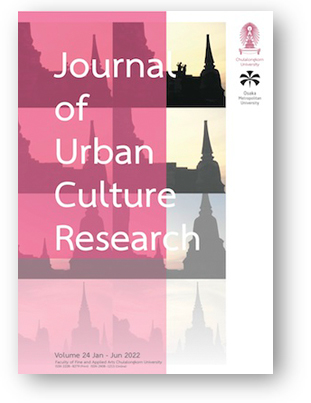Living with Inundation and Dehydration: Comparison of the Adaptive Landscape in the Chao Phraya and the Bangpakong River Deltas
DOI:
https://doi.org/10.14456/jucr.2022.4Keywords:
Chao Phraya River, Bangpakong River, Adaptive Landscape, River Delta, Cultural Landscape, ThailandAbstract
This paper compares the research outcomes regarding the two river deltas in the central part of Thailand: the Chao Phraya River – CPR and the Bangpakong River – BPR. The most common feature of the river deltas in this region is an ecosystem landscape that fluxuates throughout the year. These river dynamics are known as the pulse flow, which influences the way of life of riverfront communities and agriculture. The pulse differences are high and low in magnitude on the scale of a day, a lunar calendar month, annual seasons, a century, or even a longer period. The objectives of this study are to understand how people’s lives are affected by water to understand the dynamics of nature when living under different circumstances, such as inundation or dehydration. Primary data from prior observations and field surveys of the two rivers are analyzed and the recent impacts from anthropocentrism, including using waterways as sewage channels for decades, are assessed to seek connections with nature and other forms of life. The conclusion leads to the understanding of the transboundary nature in multidisciplinary research and holistic approaches to integrate bioengineering and local wisdom into planning and design, which will offer the most efficient instruments for sustaining waterfront development and transition into the coming of a new epoch of ecological naturalism.
Downloads
Published
How to Cite
Issue
Section
License

This work is licensed under a Creative Commons Attribution-NonCommercial-NoDerivatives 4.0 International License.
Authors authorize the JUCR to publish their materials both in print and online while retaining their full individual copyright. The copyright of JUCR volumes is retained by Chulalongkorn University.
The views and opinions expressed herein are those of the individual author(s) and do not necessarily reflect the policies or opinions of the Journal (JUCR), it editors and staff, Chulalongkorn University, or Osaka Metropolitan University.








